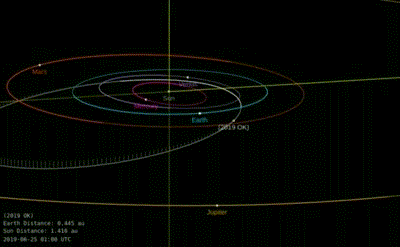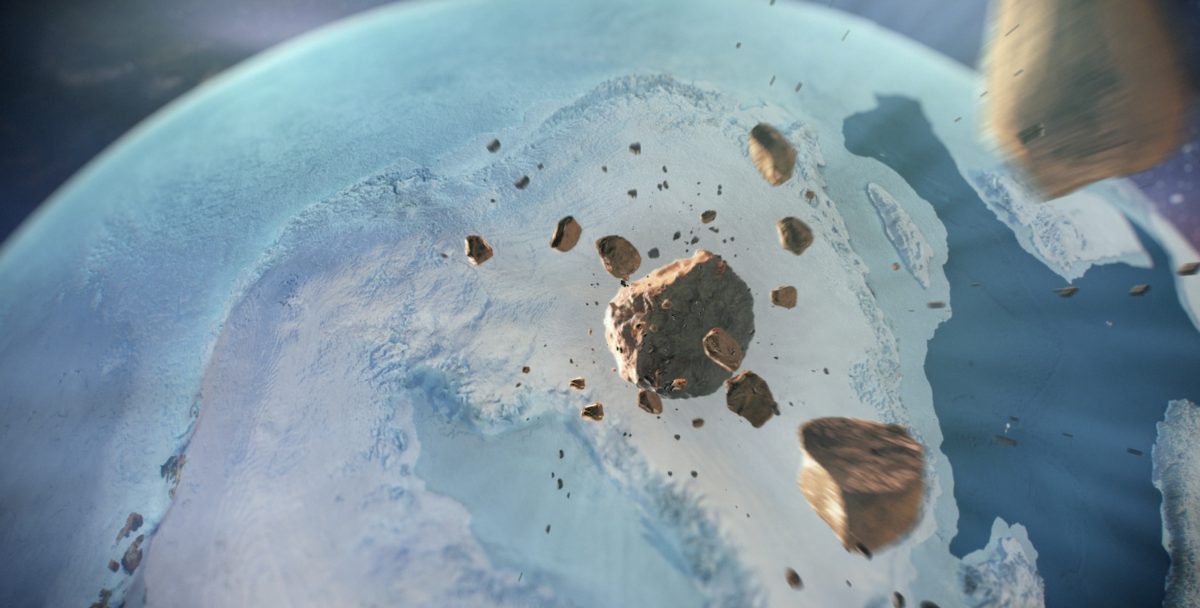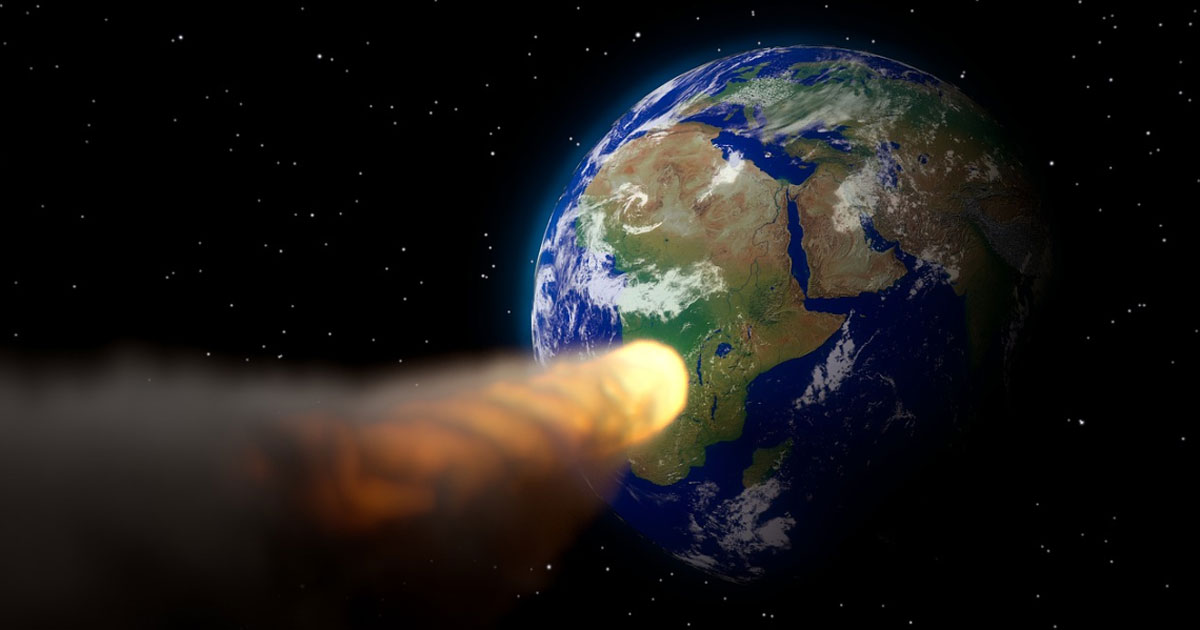An asteroid estimated to be 57 to 130 meters wide (187 to 427 feet) almost hit Earth on Thursday, July 25, 2019.
 Earth on blue path, asteroid on white path.
Earth on blue path, asteroid on white path.
News from halfway around the world put the exact timing of the near-collision at 11.22am (or 11.22pm Singapore time).
How close?
The asteroid whizzed within 73,000km of Earth.
This distance is less than 20 percent of the distance between Earth and the moon, which is about 384,400 km.
It was travelling in Earth's direction at 87,000kmh.
What is the asteroid called?
The asteroid is named 2019 OK.
It is wider than the Statue of Liberty is tall.
Did anyone see it coming?
Scientists didn’t know the asteroid was even a threat or that it would have come so close.
This was so as no one in the astronomy community had been tracking this particular asteroid.
Michael Brown, an astronomer in Australia, told The Washington Post that 2019 OK seemed to come “out of nowhere”.
The Twitter video of the close shave has been viewed a million times:
This is the video of the close encounter of Asteroid 2019 OK we have been Twitting all day with the Earth: https://t.co/bjT7uhQJuO pic.twitter.com/3e4UyPcdPl
— All-Sky Automated Survey for SpookyNovae* (@SuperASASSN) July 25, 2019
 via Natural History Museum of Denmark/NASA Goddard Space Flight Center
via Natural History Museum of Denmark/NASA Goddard Space Flight Center
What would have the impact been like?
2019 OK would have destroyed a city easily, even though it is considered small.
The killer space rock that is widely believed to have wiped out the dinosaurs 66 million years ago was much more massive at 9.6km-wide when it hit modern-day Mexico and triggered a cataclysmic event.
In 1908, a space rock estimated to be several hundred feet in diameter -- a bit smaller than 2019 OK -- exploded over the remote Tunguska region of Siberia with the force of a thermonuclear weapon, flattening trees in an area nearly twice the size of New York City.
What is NASA doing about this?
NASA tracks about 90 percent of those types of big asteroids -- the ones that are 800 metres in diameter or more.
In 2005, Congress directed NASA to track down 90 percent of near-Earth asteroids with a width of 140 metres or more by 2020.
As of December, telescopes on Earth and in space had found less than one-third of these near-Earth objects (NEOs).
Why is it difficult to track smaller asteroids?
It is difficult to detect small asteroids.
Telescopes have to be pointing in the right direction and these tiny asteroids can be seen only when the sun's light reflect off them.
Research teams in Brazil and the United States didn’t discover that 2019 OK was approaching until less than a week before it passed by.
Astronomers didn’t release information about how big the asteroid was or where it was heading until mere hours before it flew by Earth
Are there ways to save Earth from an incoming asteroid?
With more time, there are ways to deflect asteroids given Earth's state of technological advancement.
One of those options is to launch an object into space to knock the incoming space rock off-course.
Another involves a gravity tractor.
This would involve sending a spacecraft to fly alongside an asteroid for a long period of time, such as decades, according to NASA, and slowly pull it away from its Earth-bound path.
But for this tractor plan to work, scientists would need to know about NEOs years ahead of time.
Were there near-collisions the past few years?
in Janauary 2017, a 10-storey asteroid about 15 to 34 metres came within about half the distance that the moon is from Earth:
In May 2014, a 7.6-metre bus-sized asteroid zipped past Earth at a distance that was even closer than the Moon (about 300,000km):
Are extra-planetary phenomena pretty?
In 2015, Bangkok witnessed two meteor fireballs in two months, providing spectacular light shows:
If you like what you read, follow us on Facebook, Instagram, Twitter and Telegram to get the latest updates.
